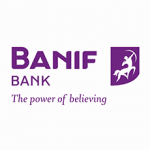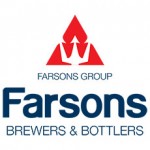
Our capital city Valletta will be celebrating the European Cultural Capital in 2018. Definitely, this will contribute to the economic and social fabric not only of Valletta but also of the country at large. It can, however, also contribute to ecological aspects as well.
Valletta is what it is today because of good planning and environmental management by its builders – the Knights of Malta. Not only was the architectural aspect taken into consideration, but also the ecological characteristics of the islands.
They specifically planned the harvesting of rainwater so that such a fortified city could resist any siege with adequate supply of such a scarce natural resource. Such culture and strategic thinking kept us going through the centuries, making the best of whatever nature provided, for free.
The Malta Water Association (MWA) is proposing that such an asset be included and highlighted together with the cultural and historical characteristics of Valletta. It is thanks to the rainwater harvesting culture that Valletta became unique and what it is today. This is part of the hidden culture and history of Valletta too.
There is a cistern in Valletta under almost every building. The Knights enforced a law requiring each house to have a cistern to collect and re-use rainwater, and be self-sufficient in such a life saving resource. And it was such water harvesting combined with the use of water from the springs in the perched aquifer, brought to Valletta through the Wignacourt aqueduct, that was instrumental in providing such a scarce and much needed resource during the sieges that Valletta and Malta went through.
Today most of these cisterns are damaged, unused, unappreciated and neglected. It would only be wise and positive planning if these are referred to in the V18 festivities to mark the richness of Valletta as the European Cultural Capital city.
“Such a professionally planned and engineered water supply system in Valletta can compete with any world water management plans”
Besides being an historic and educational exercise, this strategic move could contribute substantially to re-establishing the culture of rainfall harvesting, which was instrumental in maintaining Malta’s prosperity throughout the centuries. Such a professionally planned and engineered water supply system in Valletta can compete with any world water management plans. The reintroduction of such a culture can come to our aid again as a centre of excellence in water management.
Besides these water planning and management feats, the sewerage system in Valletta built in the 17th century was the most advanced in the world at the time. There exists a fantastic maze of water reservoirs, tunnels and other networks underneath the city. These are part of the historic and architectural heritage and can also provide and attract interest and attention (after renovation, maintenance and adaptations) both from the locals and from the many tourists who are fascinated by the fortified old city of Valletta. I am sure the EU would offer a helping hand in such a sustainable water resource management project.
No doubt about it, Malta is facing severe problems of water sustainability. It is a known fact that Malta has the least amount of water in Europe on a per capita basis. The aquifers have been severely overexploited in the last decades and this is rendering their services to nought. Seawater desalination is not considered as a sustainable practice, considering the high energy consumption also contributing to emissions of carbon dioxide in the atmosphere.
The revival and reuse of the water harvesting network in Valletta is recommended by the Water Policy 2012, and also by recent EU water policies: rainwater harvesting, as a sustainable practice, must be introduced or reintroduced.
The Malta Water Association’s proposal is to incorporate in the Valletta City of Culture 2018 the re-activation of Valletta’s (and Malta’s) unique rainwater harvesting culture and put it back on the world map for social, ecological and economic benefits to be reaped.
This can be achieved by identifying disused rainwater cisterns and rehabilitating them, so that they can reduce the stress on our groundwater resources and reduce the financial burden of desalination. Indeed some of these cisterns are within palaces and museums which are already contributing to Malta socially, ecologically and economically. Awareness and accessibility of these assets will further enhance both local and foreign visitors’ experience.
Such measures can be augmented by surveys and questionnaires to assess Malta’s rainwater harvesting potential and opportunities for providing more. Technical guidelines can be drawn up to ensure the maximisation of Malta’s rainwater harvesting potential, and the safe use of the harvested water.
Communication, education and public awareness campaigns are a must to instil awareness about Malta’s water problems, and promote rainwater harvesting as a ‘rediscovered technology’.
The precautionary principle regarding the sole dependency on desalinated water is another factor which justifies use and reuse of a rain water harvesting engineered network as a back-up to national security.
The urgency of such a measure can be appreciated when considering that a possible oil spill or any other issues with regard to the supply of fossil fuel in the Mediterranean will lead to a very limited availability of potable water.
The Malta Water Association feels that there would be great satisfaction and reason to celebrate the uniqueness of Valletta if such water harvesting measures were taken on board.
This would be an evolving project requiring ambition and flexibility crowning the V18.



